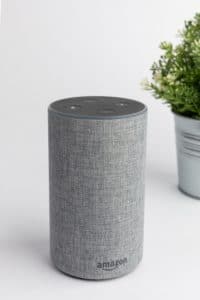Model Name: Disruptive Innovation
Author: Clayton M. Christensen, Michael E. Raynor, and Rory McDonald
Year: 1995
Purpose: Innovation-driven growth, new market, and value network | Disrupting an existing business sector | challenging established market | innovations that disrupt.
Some say a dramatic breakthrough innovation in any area of the field is what a disruptive innovation is.
While others believe that any technology-based company offering some hot new product is actually practicing disruptive innovation.
What do you say? Are you among those who think:
All the innovations are disruptive by nature? Or an innovation has to be a breakthrough to be disruptive? Or disruption is only related to technology? Or it’s simply a meaningless buzzword that has been overhyped on the internet nowadays?
If you ever wonder about any of these, you are actually on the grapevine! Disruptive innovation is an entirely different phenomenon that utterly disregards all the above-mentioned misconceptions.
This is the reason why Christensen and his proponents have sadly commented on the following:
“Unfortunately, disruption theory is in danger of becoming a victim of its own success. The theory’s core concepts have been widely misunderstood and its basic tenets frequently misapplied.”
I am sure you have now understood what disruptive innovation is or have you? So, now let’s figure out what it actually is.
Disruptive innovation – Straight from the horse’s mouth
Clayton M. Christensen defines this theory in his book ‘The Innovator’s Dilemma’ as:
“Disruption” describes a process whereby a smaller company with fewer resources is able to successfully challenge established incumbent businesses.”
Now here’s a brief description for more clarity. Christensen used the word ‘process.’
Imagine a company enters the market, disrupts the industry by launching a breakthrough and gets success in a short period.
Would it be a disruptive innovation?
No!
Because success doesn’t come quickly through disruption, it goes through a process (usually start from a low end or in new-market) and generates results over time. It never guarantees success.
Next, he uses ‘fewer resources.’ That means, to be disruptive, you don’t have to disrupt your core offering. With a unique utilization of the right resources and simple applications, you can bring disruptive innovation. (You don’t have to be superior for customers initially).
Besides, it’s not just different products or services that disrupt the industry but the unique business model that brings you up in the market.
Last, ‘challenge established businesses.’ It indicates entry into the overlooked segments where you gain a foothold by offering more suitable functionality. Besides, this innovation arises when you exceed the needs of some segments (target customers), while ignoring the needs of others.
To make your concepts clearer, we have given 25 amazing examples of industries where disruptive innovation comes into play.
-
Internet of Things (IoT)
A concept in which everything can fit with the ability to collect, send, and receive information. It became a reality when tech companies like Samsung, Bosch, and Intel launched various start-ups using this technology in surprising new ways.
Wocket introduced smart wallets replacing the entire wallet with a single card.
Stolen wallets cause the most ID theft. pic.twitter.com/JGeoEKUTxd
— Wocket Smart Wallet (@WocketWallet) June 4, 2014
Parrot launched a smart drone with built-in sensors to measure temperature, moisture, and fertilizer level.
🔊 ANAFI is now available as an Extended version! Enjoy a comfortable shoulder bag + 3 batteries that collectively provide an incredible 75 minutes of flight time!
— Parrot (@Parrot) October 25, 2018
Find out more : https://t.co/WOoLKfKJ1Y#ParrotANAFI pic.twitter.com/3hVxAFBqYz
-
Artificial Intelligence
Another disruptive technology is AI which efficiently helps enterprises to analyze the large sets of unstructured data quickly. It operates through language comprehension and image analysis.
Big Data and AI in the cloud are the most significant developing trends. IBM is an artificial intelligence pioneer that designed “Watson” and helped NASA in tracking the flight of orbital technology.
"Today, AVA talks to over a hundred thousand customers a month. She’s got an 88% customer satisfaction rate, and her resolution time is about 3.9 minutes." @autodesk on their Watson-powered virtual assistant: https://t.co/1CnEKaiAQF pic.twitter.com/xzqHcKYCIH
— IBM Watson @ Think (@IBMWatson) February 8, 2019
-
3D Printing
The manufacturing innovation, 3D printing is used to create prototypes. Recently, many disruptive applications and devices have launched. These are used for remote manufacturing and printing more sophisticated designs including 3D printed fashion and customized prosthesis. Companies like MakerBot and Voxel 8 sell 3D printers.
Hurry, this exclusive offer ends March 15th. Don't miss this opportunity to get FREE 3D printing materials and MakerBot Certification licenses. https://t.co/8PEVwPnFlg pic.twitter.com/OVOJvcFKwZ
— MakerBot (@makerbot) February 17, 2019
-
Blockchain Technology
The decentralized and distributed ledger technology underpinning Bitcoin and other crypto-currencies have been gaining popularity since the last few years. Many Blockchain businesses, platforms, and networks have now been practicing this technology, disrupting the conventional payment services and financial systems. Examples are Ethereum, BitGold, Litecoin, etc.
-
Cancer treatment
Scientists have come up with an innovative cancer treatment in which they recode cancer by editing the genes. Two cancer-suffering babies recovered through this technique, which is becoming extremely progressive. It is transforming and disrupting the cancer treatments currently in usage.
-
High-Speed Travel
Advanced technology for resolving many complex long-distance issues. It came into reality with the first test of Hyperloop One prototype propulsion system. Companies like Tesla and SpaceX have participated in this sector by far.
Tesla in @boringcompany tunnel with retractable wheel gear that turns a car into a rail-guided train & back again pic.twitter.com/3a6i0NoSmi
— Elon Musk (@elonmusk) December 19, 2018
-
Robotics
An exciting disruptive technology that corresponds with advanced and capable robots having enhanced expertise, senses, and intelligence. Best Buy uses a robot called Chloe to dispense iPhone chargers and plug adapters. Adidas has launched ‘Speedfactory,’ a robotic manufacturing plant to ship items in Asia and Europe. And DIY store Lowes has introduced ‘LoweBot,’ customer service to recognize people by face and voice.
.@adidas x @footlocker Partner to Re-Envision the Future of Creativity & Speed.
— PabloMurphy® (@PabloMurphy) January 22, 2019
The Brands Announced a New #SPEEDFACTORY Go-To-Market Plan to Enable Consumer-Driven Footwear Designs – https://t.co/bvequlQZXF via @PRNewswire pic.twitter.com/ug1EUHgdZk
-
Autonomous Vehicles
Self-driving cars and autonomous vehicles are another disruptive technology. Tesla, Toyota, Daimler, and Cummins have paved their way in bringing electric trucks with the technology of ‘enhanced autopilot.’
Yes, Tesla Semi https://t.co/MNEZyVhHgp pic.twitter.com/rJPIx2Ml8k
— Tesla (@Tesla) March 22, 2018
-
Advanced Virtual Reality
A technology providing interactive computer-generating experience is now transforming the way how we experience the world. Companies like Oculus – Virtalis, and Void are using this technology to help people experience new things and dimensions without limits.
As we look ahead to @Official_GDC, Head of VR Product @natemitchell shares his thoughts on the road from @OculusRift to #OculusQuest and beyond // https://t.co/ON0PPs0VCY pic.twitter.com/2i0CQJ7ZYL
— Oculus (@oculus) February 11, 2019
-
Renewable Energy
Renewable resources like solar power and wind power are disrupting traditional energy resources. Companies like First Solar, Vestas Wind System, and Canadian Solar are few examples that generate renewable energy.
-
Digital commerce
Many brands are redesigning their websites to support voice and visual searching. It will tremendously increase digital commerce revenues. Amazon Echo, Google Home, and Apple’s HomePod have created voice-enabled devices.

-
Quantum computing
Many companies like IBM, Google, and Intel are investing in quantum computing. It is an approaching disruptive technology that will outperform a supercomputer.
-
Web-based video
A disruptive innovation that is on the brink of disrupting cable. The most popular one, Netflix has revolutionized the way we watch TV and movies. It brings on-demand viewing on desirable schedule while avoiding irritating commercials.
Disruptive industries keep on disrupting #Netflix @netflix surpasses cable. #disruption @statista pic.twitter.com/5BLXZjIF8a
— Mia Kruger, CFA (@Mia_Kruger) February 13, 2018
-
Drone logistics
Matternet, partnered with Mercedes-Benz, has introduced drone logistics system and fleet. They provide lightweight deliveries directly to consumers using automated cargo management system. It disrupts the traditional shipping practices.
Learn about our end-to-end system for last-mile delivery in partnership w/ #MercedesBenz, at https://t.co/KBlzEJJ2bN pic.twitter.com/poiK6trWaB
— Matternet (@matternet) September 8, 2016
-
Online transportation marketplace
VeriTread has introduced its online transformational marketplace for heavy-haul transport. You can get competing bids from reputed heavy-haul transport companies, select transportation provider online, and manage your shipment on fingertips.
-
Intelligent automation
It’s related to cognitive applications and software platforms used to streamline business processes. IKEA and Ericsson are using this technology. It disrupts all the manual working and tasks.
-
Neurosurgery for a head transplant
Neurosurgeon Sergio Canavero has proposed head transplant to cure the Werdnig-Hoffman’s disease. It’s a great revolution in the field of medicine, disrupting the standard practices in the industry.
-
Sunscreen Pills
Companies like Heliocare have introduced sunscreen pills, disrupting the sunscreen market. Pills are supposed to offer protection against UV rays which can cause skin cancer.
-
Skype Translator
Skype has developed an artificial-intelligence-based application; Skype Translator to eliminate the language barrier. It allows us to talk to anyone irrespective of their native language. It’s disrupting the other communication apps.
#SkypeTranslator offers Japanese as its 10th real-time spoken language. Learn more: https://t.co/AIWu7QDA27 pic.twitter.com/O91PF6VqXw
— Skype (@Skype) April 6, 2017
-
Floating farms
Now farms will be on the sea and lakes close to the cities. Smart Floating Farms have created a set-up to produce fresh food near home. It disrupts the conventional solutions for producing food.
-
Invisible hearing aid
ReSound LiNX 3D has introduced a digital hearing aid to identify speech in noise. It allows you to hear more sounds around you. These are like wireless headphones which are nearly invisible.
-
Acquiring biometric data
Many companies have stepped up in the health and fitness sector to provide mobile health apps that can help people measure biometric data themselves. Like iHealth helps to measure glucose levels, Zensorium’s Being helps to identify emotional state and Fitbit’s PurePulse aids in measuring pulse rate.
-
Software-based eye tracking technology
UMoove has developed software-based eye-tracking technology to measure attention and focus. It uses a camera and a processor. You can track your eye movement and brain waves by downloading it on your mobile. It’s primarily designed for diagnosis and help treat conditions such as ADHD and autism.
"People who are experts in particular tasks exhibit different eye movement than non-experts” https://t.co/giSXr89nD2 pic.twitter.com/VEWhIXxiF2
— Umoove (@UmooveMe) January 4, 2016
-
Inserts for shoes for stroke victims
Veristride is a shoe-based sensor technology that measures and provides you with active feedback on your movements. It is designed to help stroke victims heal and improve their walking movements.
Veristride is looking forward to presenting biometric insoles with @GTXCorp at #CES2018 next week! For more, see: https://t.co/frAvQdXk7K pic.twitter.com/zNtdY9zMxh
— Veristride (@Veristride) January 4, 2018
-
Online Retail / Shopping
Online retailers like Amazon, Apple pay, PayPal, Google Wallet, and eBay are using cloud-based computing and solutions for online payment. Now selling, buying, and making payments online in the real world has become quite usual. It has drastically disrupted the entire traditional transaction system.
So, you will now easily take part in a debate with your friends in describing what disruptive innovation is and what it’s not. Give these examples and overwhelm them!
Tell us what you think? Did you find this article interesting?
Share your thoughts and experiences in the comments section below.














Add comment